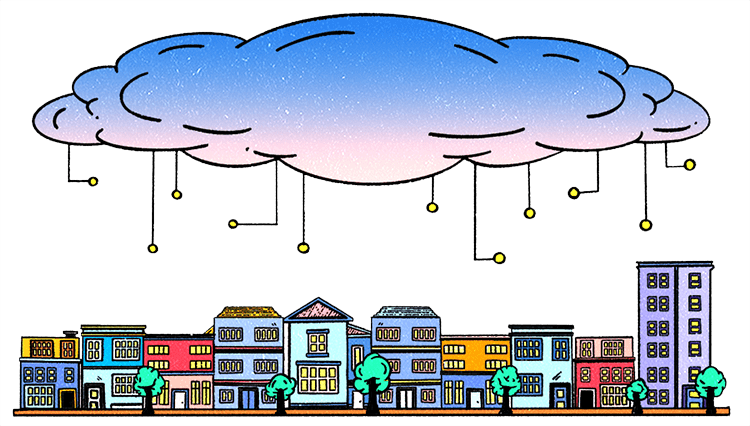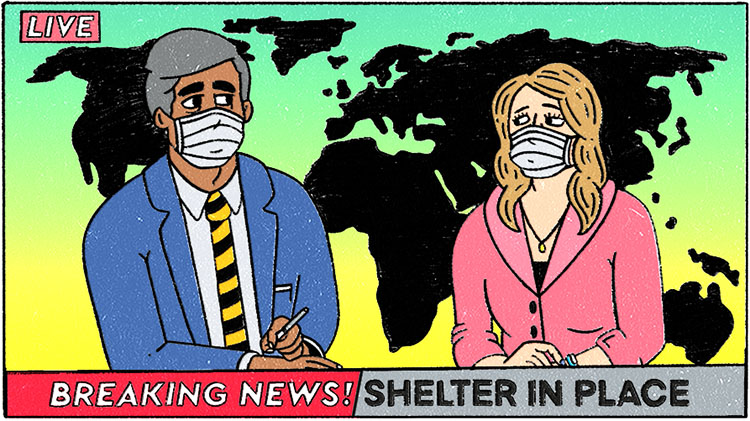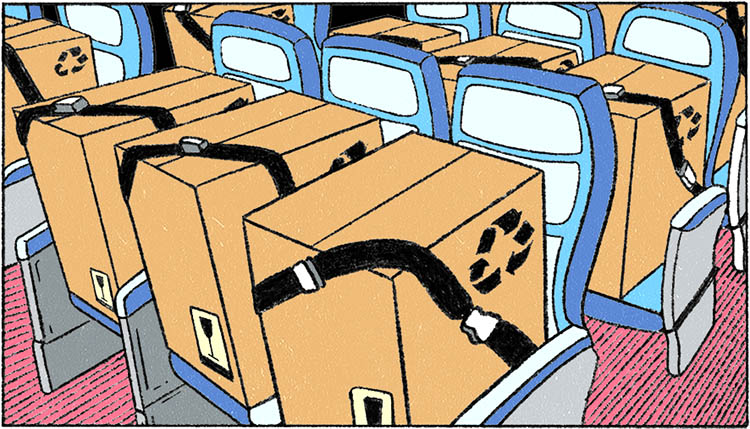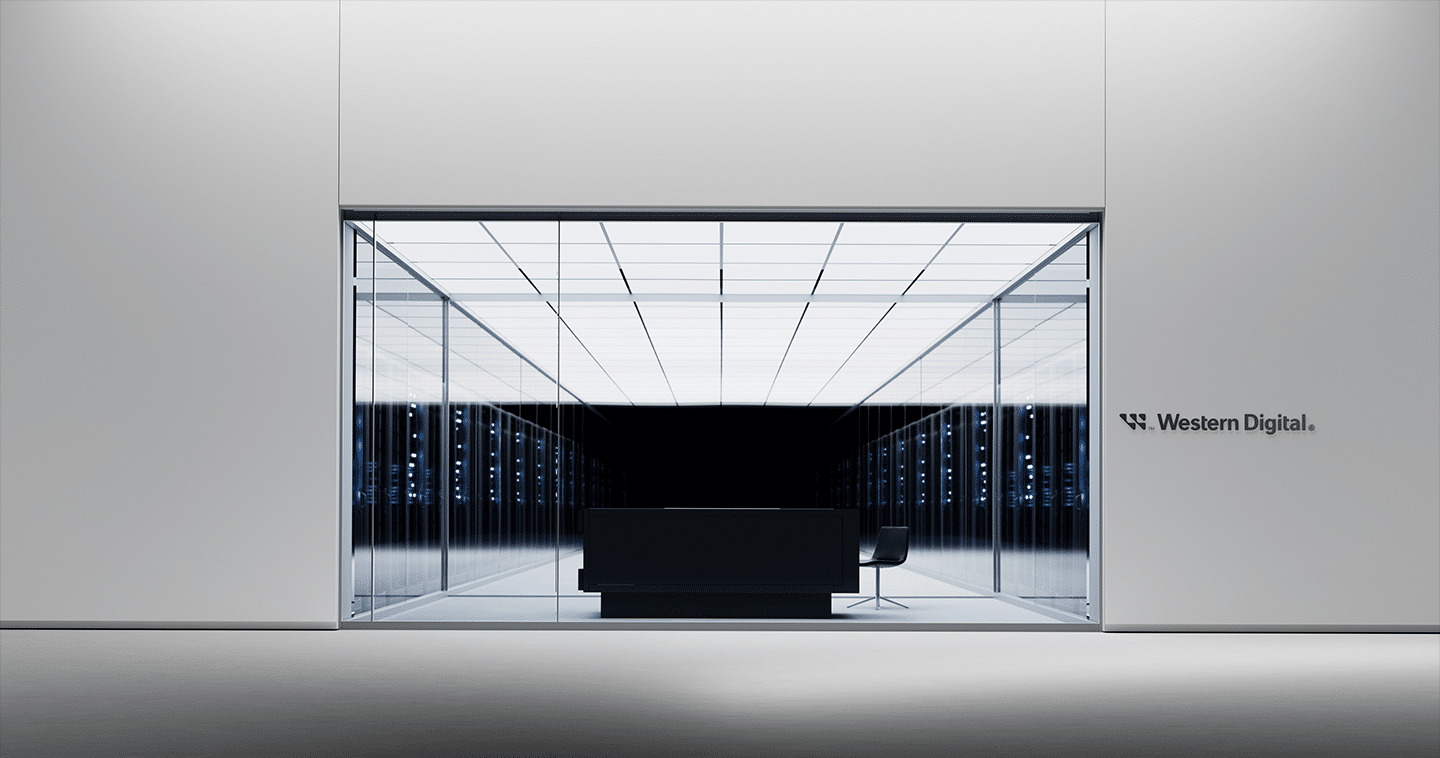COVID to the Cloud—Can you Handle Me?
By Ronni Shendar. Illustrations by Aisha Alkinaey.
As the world was scrambling to adjust to the new COVID-19 reality, cloud usage has been indisputably soaring.[1] It seems like no matter how many video meetings, streaming binges or viral dance challenges we throw at it, the cloud never says no. While many feared that the sudden increase in activity would cause the internet to break, or that cloud outages would prevail, the cloud has proven largely resilient.[2]
“Although we have seen more activity, we have not experienced any issues in the systems or services we are providing during this crisis,” said Marcin Kowalski, product manager at CloudFerro, a European cloud service provider and one of Western Digital’s customers. “The fact that within 24 hours, we moved our operations to a remote-work setup without any complications, is a proof of the cloud’s hands-off model, how stable and scalable cloud architecture is, and the quality of the underlying hardware infrastructure.”
But it’s not all blue skies.
The Physicality of the Cloud
CloudFerro focuses on special market segments, such as the European space sector – think satellites images, scientific research and REALLY big data. Many of their customers require dedicated, private cloud installations. And, in some cases, these clouds need relocation.

“One of our [CloudFerro] customers needs to move their cloud infrastructure from the UK to Italy,” Marcin said. Even under normal circumstances, petabytes of data are hard to move. Massive data sets aren’t migrated using a network cable, but rather by hiring a 26-foot truck. And, if there’s one thing that has become especially unwieldly amid this pandemic, it’s travel.
Marcin explained that “the team moving the infrastructure may face a two-week quarantine upon entering the UK from Poland, another quarantine when bringing equipment for maintenance in CloudFerro’s Warsaw lab, and a third quarantine when they integrate the servers in Italy.” That is, if no lockdown happens first.
“We have to completely rethink how we do things. If our main focus until today has been on software and hardware architecture, we now have to master new ways of approaching logistics and resources amid utter uncertainty,” Marcin said.
Welcome to the supply chain conundrum.
A Data Center Supply Chain Disruption Like No Other
Refugio Fernandez describes his job as “being perpetually aware of risks.” He explained, “I always assume that if something can go wrong, it will go wrong.” Refugio is a supply chain manager at Western Digital customer and partner, Dropbox. He understands disruption and isn’t easily shaken. Even when Dropbox saw some of their services increase by 40% since March[3], and the surge in activity started to “put pressure on ensuring there’s enough physical infrastructure in place,” he recounts.
As the aforementioned alarmist, it’s not surprising that Refugio and his team scoped the risk of the pandemic early on. Wuhan, where the virus was first reported, is an important logistical hub in the server component industry. And, the lockdown was about to take place during the Chinese New Year, a holiday known for traveling and considered the world’s largest human migration… [4]
Refugio’s team was valiantly trying to stay a step ahead. Dropbox began accelerating and buying more of their data infrastructure inventory. They even proactively exchanged 30,000 components in their data centers. But as lockdowns finally reached their San Francisco Bay Area factories, Refugio realized they were about to face a never-before-seen disruption to data center hardware supply.

“I’ll never forget that moment. It was my first few days working from home. I had a coffee in my hand and I turned on the TV to watch the news. And then it happened. They announced the San Francisco Bay Area shelter-in-place orders. In that moment, things got very real. First, my head was racing trying to figure out what this means for me – should I run out to buy food? Will I be able see my family? And then came the thought about what this means for Dropbox,” recounts Refugio. “It was certainly a moment of PANIC.”
The Gates of Globalization Shut Down
On the other side of that supply chain was Western Digital. With a dozen factories around the globe, Western Digital’s manufacturing flow is very complex. The company needed to move millions of technologies, materials and products, but saw global transit lanes crippling. “Borders suddenly closed, piling a backlog of goods for days at a time, while airports simply ceased operations,” shared Ryan Inouye, VP of Supply Chain at Western Digital.
Western Digital was equally worried about what this logistics mayhem meant for not only Dropbox, but for the rest of the tech industry. What do you do when the arteries of globalization come to a screeching halt?
“The only way is to get right down to it,” said Ryan. “There were no shortcuts, but we used plenty of creativity.” Western Digital’s procurement teams spent days, nights and weekends engaging with thousands of direct and sub-tier suppliers, and to keep the supply chain moving, began transporting cargo on the empty seats of passenger planes.
The company also used probabilistic modeling to analyze COVID-19 trends and cross-calibrate them with geographical data. Armed with predictive data, Western Digital could foresee when the pandemic would peak in different regions, and make quick pivots to the supply chain before a lockdown hit. “A worst-case scenario was always around the corner,” Ryan shared, “and we had to avoid it. Our management and all the teams were with our customers, like Dropbox, 100% of the way.”

Now back to Refugio and Dropbox: “If servers would be late, we would be months behind on being able to support our platform,” Refugio explained. His weapon of choice? Something very uncommon in vendor relations – transparency. “We had to be extremely transparent about our [Dropbox] situation, and they [Western Digital] didn’t hesitate and shared real-time updates deep into their supply chain,” he said.
“Thanks to insight we had, Dropbox could better assess risks, ramp up on infrastructure, flex our supply chain, and make quick decisions like moving our manufacturing from the Bay Area to Mexico,” Refugio continued, and allowed himself to sit back and smile. “Ultimately, that enabled us to have the capacity in place to serve our customers.”
The Super Spreader Cloud
It seems the one constant amid this pandemic is change. For Zadara, a leading enterprise storage-as-a-service provider and Western Digital customer, the spike in demand caused by the pandemic showed a nearly 50% increase in customer transactions in the months immediately following March 2020; yet the individual transactions were notably smaller (on average) than prior quarters.
“The cloud is a mirror of the changing business environment and it’s a mix of increasing and economizing,” said Noam Shendar, VP of worldwide solution architecture at Zadara.
Yet it’s not just Zadara’s customers that are changing how they do things, Zadara’s cloud is changing too. The company’s storage services are not only expanding, but multiplying as a result of the pandemic. Zadara plans to quadruple the number of available sites to more than 1,000 by the end of next year.
“COVID-19 has given rise to more use cases that need low latency—like telesurgery, and online gaming,” explained Noam. Clearly, any gamer would be frustrated in a battle royale if their opponent could shoot faster simply because they’re closer to a cloud. But it’s not latency alone.
Privacy regulations can restrict data from crossing local, national or international borders (ask any lawyer to explain the quagmire of Scotland, the UK and Brexit…). And, since the pandemic has reshuffled how and where we work, Zadara’s enterprise-grade solution is needed in more localities.
So as the cloud adapts to its growing role amid this pandemic, what can we learn?
If You Can’t Pick Your Battle, Pick Your Partner
For Refugio of Dropbox the biggest learning from all of this is that “COVID-19 showed there are contingencies everywhere for infrastructure, and that the supply chain cannot be an exception.” But it’s not so straightforward, he explained, “with hardware and software we have obvious redundancies, but supply chain resilience is very much rooted in the human element. It’s about finding the right partners.”

Noam of Zadara shared a perspective with a similar gist. “The business world tends to focus on product features,” he said, “but to steer through a crisis you need companies that will be there for you, and there are those that are and those that aren’t.” He continued, “in this pandemic, Zadara customers are scrutinizing their infrastructure and looking at how they do things through a different lens. Zadara’s job is to help them make sense of it all and to be successful, even if it’s not always in our financial favor. And, we saw the same type of treatment from Western Digital ensuring we can continue operating with no disruption during this critical time.”
It may seem ironic that at a time where technology and digitization are taking over most aspects of our lives, the human element was what stood out most for many cloud service and platform providers. People, partners and relationships were a key component in building the needed resilience to deliver services at a time businesses, researchers, frontline workers, scientists and teachers needed them most.
“None of us could have prepared for the threat and the impact of COVID-19,” said Marcin of CloudFerro, “but the way we managed to pull through these tough times and currently operate, is a textbook example of how team cooperation, determination and strong partnerships can cause wonders. One day this will be a case study on how businesses need to react to sudden changes.”

Learn More About How Western Digital Customers are Navigating the Pandemic:
Learn how CloudFerro is using cloud resources and Earth observation data repositories to fight COVID-19:
https://creodias.eu/covid-19
Read how Dropbox engineered a disruption tolerant supply chain:
https://dropbox.tech/infrastructure/engineering-a-disruption-tolerant-supply-chain
See how Zadara supported frontline workers with free storage services:
https://twitter.com/Zadara/status/1242916497871306754
Footnotes:
[2] https://www.theregister.com/2020/08/05/covid19_internet_impact_thousandeyes/
[3] https://blog.dropbox.com/topics/company/dropbox-by-the-numbers-in-q1-and-early-q2




